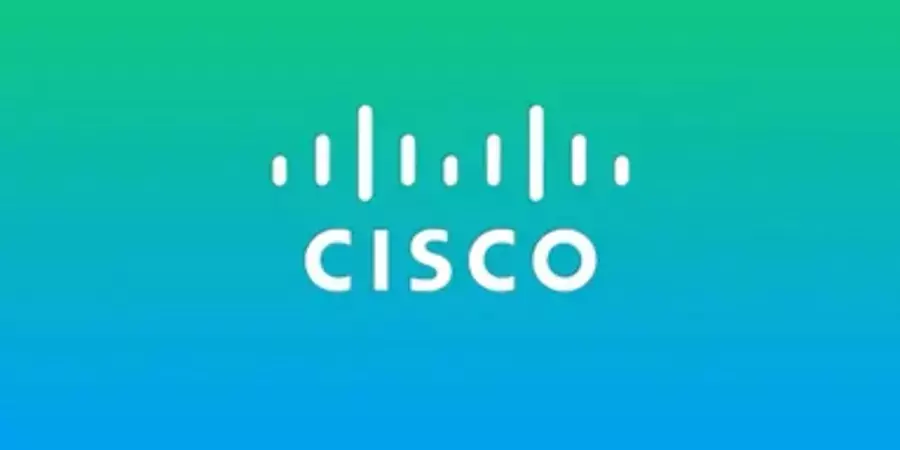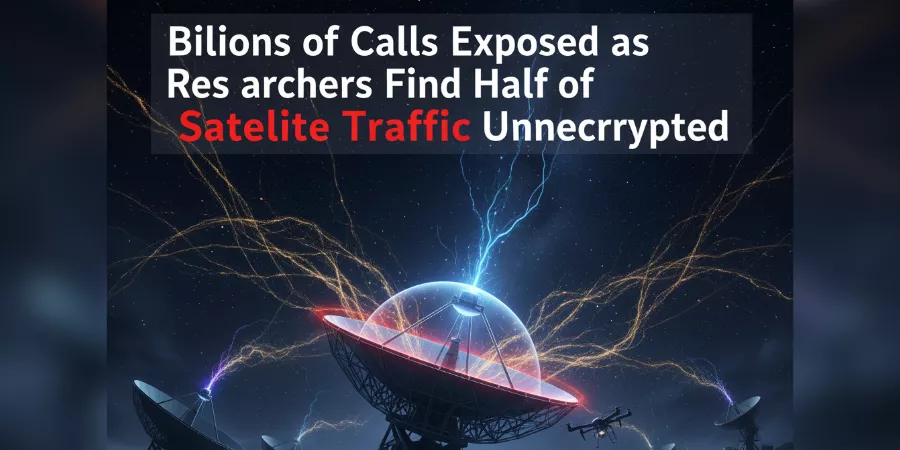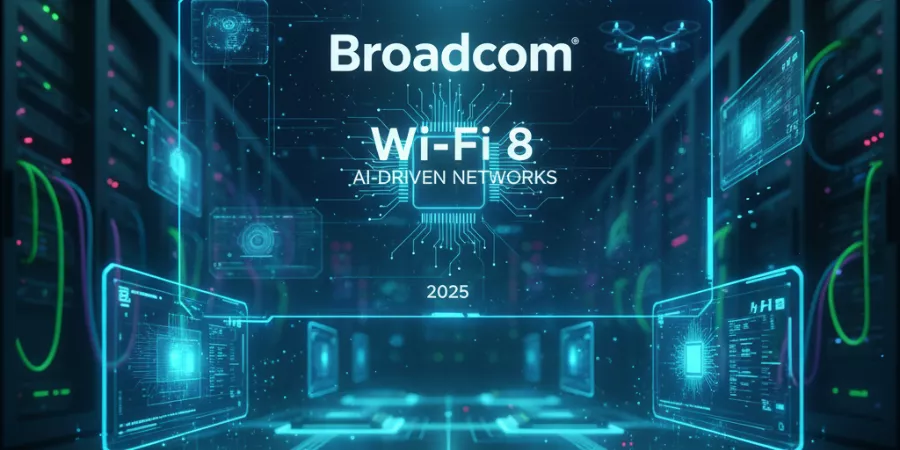Cisco Systems announced its second major workforce reduction of fiscal year 2024 on August 14, 2024, cutting 5,600 positions (7% of 84,900-person workforce) following February’s 4,000-employee reduction, bringing total FY2024 layoffs to 9,600 employees (11.3% workforce decrease) as the networking giant restructures away from declining hardware revenues toward recurring software, cybersecurity, and observability markets. The announcement accompanied Q4 FY2024 earnings revealing 10% year-over-year revenue decline to $13.6 billion (vs. $15.2B Q4 FY2023), 45% net income plunge to $2.2 billion, and guidance projecting further 5-6% revenue contraction in FY2025 reflecting structural challenges in Cisco’s core switching/routing business where enterprises delay network upgrades amid economic uncertainty and shift spending toward cloud infrastructure reducing on-premises equipment demand. CEO Chuck Robbins framed restructuring as “simplifying our business and rebalancing resources” to accelerate growth in AI infrastructure, cybersecurity (post-$28B Splunk acquisition completed March 2024), and observability platforms generating higher-margin recurring revenues versus traditional hardware sales. Yet Cisco’s strategic pivot confronts formidable obstacles: Arista Networks capturing data center switching market share (32.4% vs. Cisco’s 42.8% per Dell’Oro Q2 2024), hyperscalers (AWS, Azure, Google Cloud) building proprietary networking reducing Cisco dependence, and Splunk integration complexity requiring 18-24 months before revenue synergies materialize while Cisco absorbs $1.5B annual operating costs. This analysis examines Cisco’s Q4 FY2024 financial performance with segment-level detail, strategic rationale for workforce reductions and AI/cybersecurity investments, competitive positioning against Arista and software-defined networking threats, and honest assessment whether Cisco’s transformation delivers sustainable growth or represents managed decline of networking equipment incumbent facing structural market disruption.
Cisco Q4 FY2024 Financial Performance: Declining Revenue, Compressed Margins
Quarterly Results (Q4 FY2024 ending July 27, 2024)
Revenue breakdown (Cisco Q4 FY2024 earnings report):
| Segment | Q4 FY2024 Revenue | Q4 FY2023 Revenue | YoY Change |
|---|---|---|---|
| Secure, Agile Networks | $8.02B | $9.21B | -12.9% |
| Internet for the Future | $1.51B | $1.62B | -6.8% |
| Collaboration | $1.04B | $1.14B | -8.8% |
| Security | $967M | $982M | -1.5% |
| Observability | $218M | N/A | New segment (Splunk partial quarter) |
| End-to-End Security (new reporting) | $1.19B | $982M | +21% (includes Splunk) |
| Total Revenue | $13.64B | $15.20B | -10.3% |
Profitability metrics:
| Metric | Q4 FY2024 | Q4 FY2023 | Change |
|---|---|---|---|
| Gross margin | 67.6% | 64.6% | +3.0pp (Splunk software mix) |
| Operating margin | 30.4% | 33.7% | -3.3pp |
| Net income | $2.16B | $3.95B | -45.3% |
| EPS (GAAP) | $0.52 | $0.96 | -45.8% |
| EPS (non-GAAP) | $0.87 | $1.14 | -23.7% |
Full fiscal year FY2024:
- Total revenue: $53.8B (vs. $57.0B FY2023 = -5.6%)
- Net income: $10.3B (vs. $12.6B FY2023 = -18.3%)
- Operating cash flow: $13.6B (vs. $13.9B FY2023)
What’s Driving Revenue Decline
1. Enterprise network equipment orders down
Cisco’s analysis (Q4 earnings call transcript):
- Product revenue: -14% YoY (hardware sales declining)
- Service revenue: -3% YoY (software subscriptions growing but can’t offset hardware)
Customer behavior:
- Enterprises delaying network refresh cycles (economic uncertainty)
- Shift to cloud reducing on-premises infrastructure spending
- Budget reallocation toward AI infrastructure, cybersecurity vs. traditional networking
2. Data center switching competition
Dell’Oro Group market share data (Q2 2024):
- Cisco data center switching: 42.8% (down from 48.2% in 2022)
- Arista Networks: 32.4% (up from 27.1% in 2022)
- Revenue impact: Cisco losing $500M-1B annually in data center switching to Arista
Why Arista winning:
- Cloud-native architecture (purpose-built for hyperscale data centers)
- Lower price/performance ratio
- Software-centric approach (EOS operating system)
- Strong relationships with AWS, Meta, Microsoft Azure
3. Service provider capex contraction
Telecom operators (major Cisco customers) reducing spending:
- 5G buildout slowing post-initial deployment
- ROI pressure (5G monetization challenges)
- Cisco Internet for the Future segment -6.8% YoY reflects this
The Splunk Acquisition: $28 Billion Bet on Observability
Deal Details
Announced: September 21, 2023
Closed: March 18, 2024
Purchase price: $28 billion ($157/share, 31% premium)
Financing: $18B debt + $10B cash
Cisco’s largest acquisition ever (previous: AppDynamics $3.7B in 2017)
Strategic Rationale
Cisco’s pitch:
- Expand security portfolio: Splunk Enterprise Security (SIEM) complements Cisco SecureX, Duo Security
- Observability platform: Monitor applications, infrastructure, security in unified platform
- Recurring revenue: Splunk’s 66% subscription mix higher than Cisco’s 45%
- AI/ML differentiation: Splunk’s data analytics + Cisco’s networking telemetry = comprehensive visibility
Target market:
- SIEM (Security Information and Event Management): $8.6B market, 12% CAGR (Gartner)
- Observability: $14.2B market, 15% CAGR (Gartner)
Integration Challenges
Organizational complexity:
- Splunk: 7,500 employees absorbed into Cisco
- Separate reporting segment (Observability) initially, eventual integration into Security
- Cultural integration (Splunk cloud-native startup culture vs. Cisco enterprise bureaucracy)
Financial burden:
- Debt load: $18B borrowed for acquisition
- Interest expense: ~$900M annually (5% avg. rate)
- Operating costs: Splunk $1.5B annual opex absorbed by Cisco
Revenue synergy timeline:
- Year 1 (FY2025): Integration costs exceed synergies
- Year 2-3: $1B+ revenue synergies projected (cross-selling Cisco security + Splunk)
- Break-even: 18-24 months post-close
Analyst skepticism:
Goldman Sachs (August 2024 note): “$28B valuation aggressive at 8.5x revenues. Integration risks high given Cisco’s mixed M&A track record. Splunk revenue growth slowing (11% YoY Q4 FY2024 vs. 30%+ historically).”
Morgan Stanley: “Splunk fills portfolio gap but doesn’t address core networking market share losses to Arista. Dilutive to earnings FY2025-2026.”
Layoff Details: 9,600 Employees Cut in FY2024
Timeline and Scope
First round (February 14, 2024):
- 4,000 employees (4.7% of workforce)
- Severance cost: $700M (charged Q2 FY2024)
Second round (August 14, 2024):
- 5,600 employees (7% of remaining workforce)
- Severance cost: $1B (charged Q1 FY2025)
Total FY2024 reductions:
- 9,600 employees (11.3% of 84,900 starting headcount)
- Post-layoffs: ~75,300 employees
- But: Splunk added 7,500 → Net workforce: ~82,800
Geographic and Functional Impact
Regions affected (based on employee reports, LinkedIn data):
- United States: 40% of layoffs (San Jose HQ, RTP, Austin)
- India: 25% (Bangalore, Pune R&D centers)
- Europe: 20%
- Asia-Pacific: 15%
Functions impacted:
- Sales: 35% (consolidating overlapping territories post-Splunk)
- Engineering: 30% (hardware-focused R&D reducing)
- Operations: 20% (supply chain, manufacturing optimization)
- Corporate functions: 15% (HR, finance, facilities)
Preserved/grew:
- Software engineering (AI, security, observability)
- Cloud operations (Webex, Duo, Security Cloud)
- Customer success (subscription retention focus)
Financial Impact
Restructuring charges (Cisco SEC filings):
- Severance: $1.7B cumulative (both rounds)
- Facility consolidation: $300M (office space reduction)
- Total restructuring costs: $2B (FY2024-FY2025)
Annual savings (Cisco projections):
- Labor cost reduction: $1.4B annually
- Operating expense optimization: $400M
- Total annual run-rate savings: $1.8B (by Q4 FY2025)
Payback period: 13 months ($2B restructuring / $1.8B annual savings)
Cisco’s AI Strategy: Infrastructure Play, Not GenAI Competition
AI Infrastructure Focus
Cisco’s positioning:
- NOT competing with OpenAI, Anthropic on models
- Enabling AI infrastructure: Networking, security, observability for AI training/deployment
Product strategy:
1. AI-optimized networking:
- Ultra Ethernet consortium (with AMD, Meta, Microsoft) for AI cluster interconnects
- 800Gbps switches for GPU-to-GPU networking
- Targeting: AI training datacenters (Nvidia H100/H200 clusters)
2. AI security:
- SecureX platform integrating AI threat detection
- Zero Trust architecture for AI workloads
- Data governance for AI training pipelines
3. AI observability:
- Splunk + AppDynamics monitoring AI application performance
- ML Operations (MLOps) tooling
$1 Billion AI Investment Fund
Announced: June 2024
Structure: Corporate venture capital fund
Focus areas:
- AI infrastructure (chips, networking, storage)
- AI security (model safety, data privacy)
- Enterprise AI applications
Investments to date (publicly disclosed):
- Cohere: $270M Series D participation (enterprise LLMs)
- Mistral AI: $85M participation (European AI champion)
- Scale AI: Undisclosed (AI training data platform)
Strategic rationale:
- Gain early insights into AI infrastructure requirements
- Build partnerships with AI startups (become preferred network vendor)
- Option value (successful exits generate returns)
Reality Check: Is This Enough?
Bull case (Cisco optimists):
- AI training requires massive networking ($100-300M data center networking per AI facility)
- Cisco well-positioned for AI infrastructure boom
- Security/observability differentiation vs. pure networking competitors
Bear case (skeptics):
- Hyperscalers building proprietary:
- Google: Proprietary datacenter fabrics
- Meta: In-house datacenter switches (Wedge, Minipack)
- AWS: Building custom Nitro networking
- Nvidia vertical integration: H100/H200 systems include InfiniBand networking (bypassing Cisco Ethernet)
- AI infrastructure market smaller than lost traditional networking: $10-15B annual AI networking TAM vs. $50B+ campus/enterprise networking (Cisco’s declining core)
Verdict: AI strategy mitigates but doesn’t reverse core business challenges.
Competitive Landscape: Cisco vs. Arista, Juniper, Software-Defined Networking
Arista Networks: The Disruptor
Market positioning:
- Cloud data center specialist: 80% revenue from cloud service providers, AI/ML workloads
- Software-first: Extensible Operating System (EOS) enables rapid feature velocity
- Price/performance: 20-30% lower TCO vs. Cisco Catalyst
Financial performance (Q2 2024):
- Revenue: $1.81B (+15.9% YoY)
- Operating margin: 42.8% (vs. Cisco 30.4%)
- Customer concentration: Top 4 customers = 40% revenue (Meta, Microsoft, others)
Where Arista wins:
- AI training clusters: Chosen by Meta, Microsoft for GPU interconnects
- Cloud provider data centers: Preferred by hyperscalers
- Latency-sensitive apps: High-frequency trading, real-time analytics
Where Cisco retains advantage:
- Enterprise campus/branch: Cisco 60%+ market share (switching, wireless, SD-WAN integrated)
- Global services: 15,000 partner network, local support
- Routing: Service provider core (CRS, ASR) still Cisco-dominated
Juniper Networks: The Acquisition Target
Announced: January 9, 2024 HPE to acquire Juniper for $14B
Expected close: Q1 2025 (pending regulatory approval)
Strategic logic:
- HPE gains networking portfolio (campus, datacenter, service provider)
- Combined entity better competes with Cisco in enterprise
- Aruba (HPE) + Juniper = #2 networking vendor
Impact on Cisco:
- New formidable competitor (HPE-Juniper combined $8-9B networking revenue)
- Enterprise RFPs become three-horse race (Cisco, HPE-Juniper, Arista)
Software-Defined Networking (SDN) Threat
Paradigm shift:
- Traditional: Proprietary hardware + software (Cisco IOS)
- SDN: Commodity white-box hardware + open-source/commercial controller software
Adoption status:
- Cloud providers: 100% SDN (Google Andromeda, AWS VPC, Azure AccelNet)
- Enterprises: 15-25% adoption (slow but growing)
- Service providers: 30-40% (NFV transformation)
Cisco response:
- Application Centric Infrastructure (ACI): Data center SDN (moderate success)
- SD-WAN: Viptela acquisition (2017) → strong portfolio
- Cisco DNA Center: Campus SDN (gaining traction)
Challenge: SDN commoditizes hardware (Cisco’s profit center), shifts value to software (Cisco playing catch-up).
Industry-Wide Tech Layoffs: Context for Cisco Reductions
2024 Tech Layoff Statistics
Layoffs.fyi tracker (January-August 2024):
- Total tech layoffs: 136,831 employees
- Companies conducting layoffs: 422
- Average layoff size: 324 employees
Major tech layoffs 2024:
| Company | Layoffs | % of Workforce | Date |
|---|---|---|---|
| Tesla | 14,000+ | 10%+ | April 2024 |
| Intel | 15,000 | 15% | August 2024 |
| Dell | 12,500 | 10% | Feb-May 2024 |
| Cisco | 9,600 | 11.3% | Feb-Aug 2024 |
| Snap | 10% | 10% | February 2024 |
| PayPal | 2,500 | 9% | January 2024 |
| Microsoft | 1,900 | 1% (gaming) | January 2024 |
Patterns:
- Legacy tech restructuring: Intel, Cisco, Dell cutting amid AI pivot
- Profitability focus: Companies optimizing cost structure
- Overhiring correction: Post-COVID hiring spree reversal
Employee Perspective: Cisco Layoff Impact
Blind (anonymous employee app) sentiment analysis:
Common themes:
- “Second layoff in 6 months creates anxiety who’s next?”
- “Senior engineers with 15-20 years laid off institutional knowledge loss”
- “Severance package: 16 weeks base + 1 week per year of service (considered generous)”
Glassdoor reviews (post-August layoffs):
- Rating decline: 3.9 → 3.6 (August-September 2024)
- CEO approval: Chuck Robbins 88% → 79%
- Morale concerns: “Constant reorganizations,” “unclear strategy”
Retained employee concerns:
- Increased workload (fewer people, same projects)
- Career progression limited (flatter organization)
- Uncertainty about future rounds
Financial Guidance and Market Reaction
FY2025 Guidance (Provided August 14, 2024)
Revenue:
- Q1 FY2025: $13.5-13.7B (midpoint: -6% YoY)
- Full FY2025: $54-55B (midpoint: -4% YoY)
Profitability:
- Non-GAAP EPS: $3.60-3.66 (FY2025)
- Operating margin: 32-33% (improving via cost cuts + Splunk gross margin accretion)
Why continued decline projected:
- Enterprise network refresh cycle delayed into 2H FY2025
- Service provider capex weakness continues
- Splunk revenue growth slowing (11% YoY, down from 20%+)
Stock Market Reaction
Cisco stock performance (2024):
- January 1, 2024: $50.75
- August 14, 2024 (layoff announcement): $47.20 (-7%)
- September 30, 2024: $52.80
- YTD performance: +4% (vs. S&P 500 +18%)
Post-earnings reaction (August 15, 2024):
- Stock fell 2.5% despite beating EPS estimates
- Analysts concerned about FY2025 revenue decline guidance
Analyst ratings (post-Q4):
- Buy: 12 analysts
- Hold: 14 analysts
- Sell: 2 analysts
- Average price target: $56 (+6% from current)
Strategic Assessment: Transformation or Managed Decline?
Bull Case: Transformation Success Scenario
What would need to happen:
- Splunk integration delivers synergies
- Cross-selling generates $1-2B incremental annual revenue by FY2026
- Unified security + observability platform wins enterprise deals vs. point solutions
- AI infrastructure momentum
- 800Gbps/1.6Tbps switches capture 30%+ AI datacenter networking share
- Ultra Ethernet becomes standard (vs. Nvidia InfiniBand)
- Enterprise network refresh
- Delayed capex returns FY2H 2025-FY2026
- SD-WAN, cloud-managed networking drive recurring revenue
- Margin expansion
- Software mix increases (45% → 55% of revenue by FY2027)
- Operating margin improves (32% → 36%+)
Result: FY2027 revenue $60B+, EPS growth resumes, stock re-rates to 18-20x P/E.
Bear Case: Managed Decline Scenario
What could go wrong:
- Splunk integration fails
- Revenue synergies disappoint ($500M vs. $1-2B target)
- Customer churn (Splunk customers defect to Datadog, Elastic)
- Cultural clash, key talent departure
- AI infrastructure opportunity smaller than hoped
- Nvidia vertical integration (InfiniBand domination)
- Hyperscalers build proprietary (limited TAM for Cisco)
- Arista continues share gains
- Data center switching share: Cisco 35% by 2027 (vs. 42.8% today)
- Lost revenue: $2-3B annually
- Enterprise network spending structurally declines
- Cloud migration reduces on-prem infrastructure permanently
- SD-WAN commoditizes branch routing
Result: FY2027 revenue $48-50B (persistent decline), margins compressed, stock stagnates.
Most Likely Scenario: Slow Transition
Realistic projection:
- FY2025-2026: Continued revenue pressure (-2% to -5% annually)
- FY2027+: Stabilization around $52-54B revenue
- Margin improvement: Restructuring + software mix → 34-35% operating margin
- EPS modest growth: 5-7% annually (buybacks + margin expansion offset revenue stagnation)
- Stock performance: Matches S&P 500, dividend yield (~3%) provides support
Cisco becomes: Mature, slow-growth infrastructure incumbent generating cash, returning capital to shareholders not high-growth innovator.
Conclusion: Cisco Navigating Structural Transition Under Pressure
Cisco’s 9,600-employee workforce reduction across fiscal 2024 (11.3% of headcount) reflects structural challenges beyond cyclical enterprise spending weakness Arista Networks’ data center switching share gains (27.1% to 32.4% over two years per Dell’Oro), hyperscaler vertical integration building proprietary networking, and cloud migration reducing on-premises equipment demand create secular headwinds to Cisco’s $35B+ traditional networking business despite near-term cost-cutting delivering $1.8B annual savings. The $28 billion Splunk acquisition represents Cisco’s largest strategic bet attempting to pivot toward 15-20% growth security/observability markets generating higher-margin recurring revenues, yet integration complexity, $18B debt burden adding $900M annual interest expense, and Splunk’s own slowing growth (11% YoY Q4 FY2024) create execution risks requiring 18-24 months before revenue synergies offset costs.
Chuck Robbins’ narrative positioning layoffs as “simplifying business and rebalancing resources toward growth areas” obscures uncomfortable reality: Cisco lacks clear path returning to sustained revenue growth given core networking market share losses, AI infrastructure opportunity constrained by hyperscaler self-sufficiency and Nvidia’s vertical integration, and software-defined networking’s continued commoditization of Cisco’s hardware profit pools. The company’s FY2025 guidance projecting -4% revenue decline confirms near-term challenges while analyst consensus expecting 2027 stabilization around $52-54B revenue (vs. $54B FY2024) suggests transformation trajectory leads to smaller, higher-margin business rather than return to growth a managed decline scenario dressed as strategic evolution.
For Cisco investors and employees, the evidence suggests recalibrating expectations from networking market leader driving innovation to mature incumbent managing market share erosion through cost discipline, portfolio diversification (security/observability via M&A), and capital returns (dividends, buybacks) rather than organic growth positioning Cisco alongside IBM, Oracle, and other legacy enterprise technology providers navigating structural transitions where profitability persists absent top-line momentum, sustainability achieved through operational efficiency rather than market expansion.
















